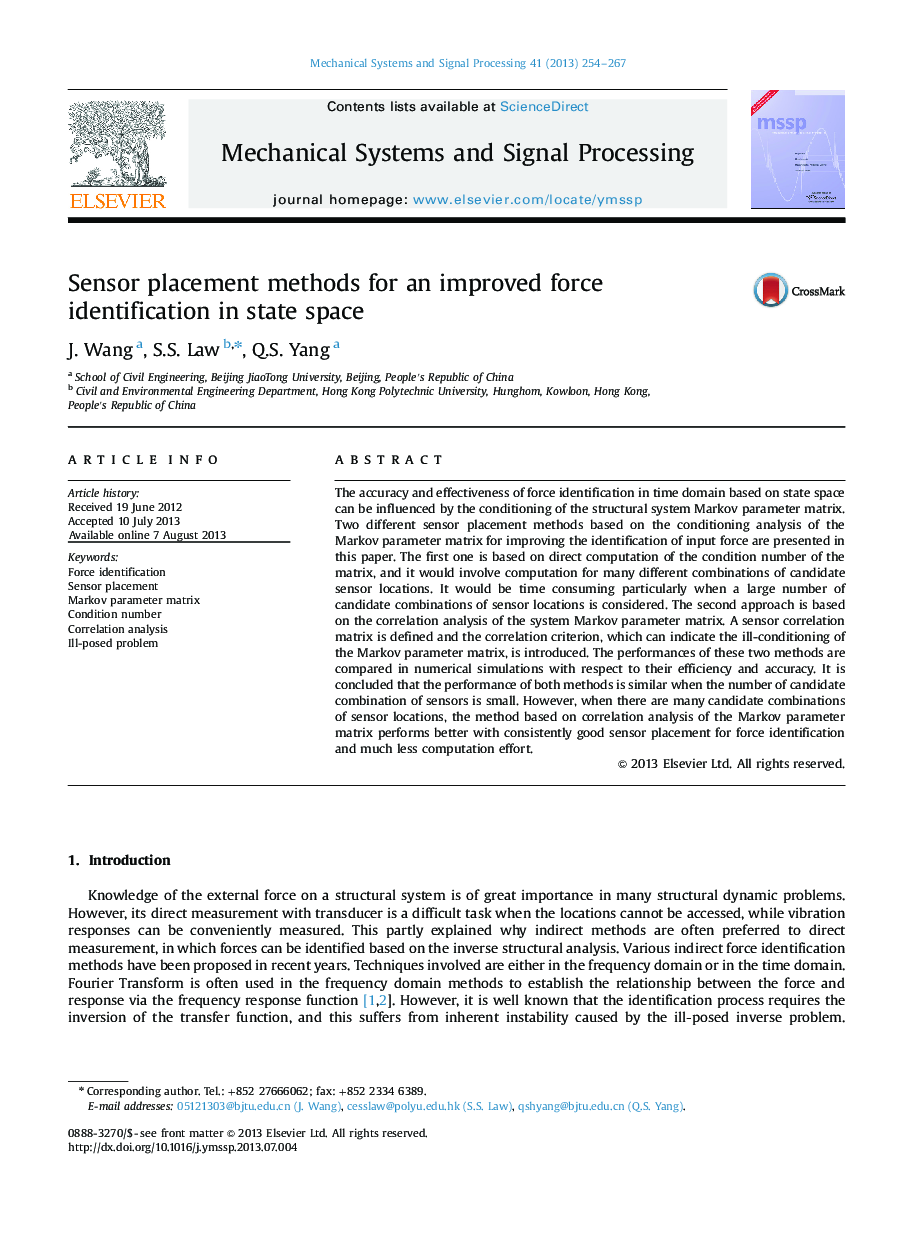| Article ID | Journal | Published Year | Pages | File Type |
|---|---|---|---|---|
| 6956543 | Mechanical Systems and Signal Processing | 2013 | 14 Pages |
Abstract
The accuracy and effectiveness of force identification in time domain based on state space can be influenced by the conditioning of the structural system Markov parameter matrix. Two different sensor placement methods based on the conditioning analysis of the Markov parameter matrix for improving the identification of input force are presented in this paper. The first one is based on direct computation of the condition number of the matrix, and it would involve computation for many different combinations of candidate sensor locations. It would be time consuming particularly when a large number of candidate combinations of sensor locations is considered. The second approach is based on the correlation analysis of the system Markov parameter matrix. A sensor correlation matrix is defined and the correlation criterion, which can indicate the ill-conditioning of the Markov parameter matrix, is introduced. The performances of these two methods are compared in numerical simulations with respect to their efficiency and accuracy. It is concluded that the performance of both methods is similar when the number of candidate combination of sensors is small. However, when there are many candidate combinations of sensor locations, the method based on correlation analysis of the Markov parameter matrix performs better with consistently good sensor placement for force identification and much less computation effort.
Related Topics
Physical Sciences and Engineering
Computer Science
Signal Processing
Authors
J. Wang, S.S. Law, Q.S. Yang,
